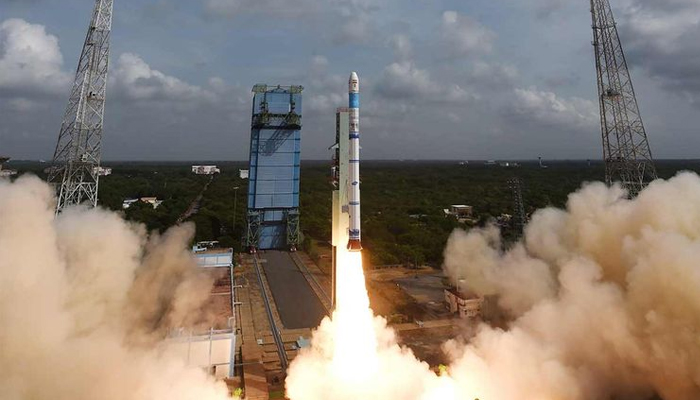
The Indian Space Research Organisation (ISRO) successfully launched Earth Observation Satellite-8 (EOS-8) from the Satish Dhawan Space Centre at Sriharikota Andhra Pradesh on Friday.
The Satellite-8 (EOS-8) was launched utilising the latest developed Small Satellite Launch Vehicle (SSLV-D3).
Taking to X (formerly recognised as Twitter), ISRO stated: “The third developmental flight of SSLV was successful. The SSLV-D3 placed EOS-08 precisely into the orbit. This marks the completion of the ISRO/Department of Space (DOS's) SSLV Development Project. With technology transfer, the Indian industry and NewSpace India Limited (NSIL), the commercial arm of ISRO will now produce SSLV for commercial missions."
ISRO said the six-and-a-half-hour countdown leading to the launch began at 02.47 am local time. This is the third and final developmental flight of the SSLV-D3/EOS-08 mission. The spacecraft is prepared for a mission duration of one year.
EOS-8 mission objective
In a press release, ISRO said: “The primary objectives of the EOS-08 mission involve designing and developing a microsatellite, making payload instruments compatible with the microsatellite bus, and integrating new technologies mandatory for future operational satellites.”
EOS-8 marks a major upgrade in satellite mainframe systems like an integrated Avionics system, recognised as the Communication, Baseband, Storage, and Positioning (CBSP) Package, which unifies various functions into a single, efficient unit. This system is developed with cold redundant systems using commercial off-the-shelf (COTS) components and evaluation boards, supporting up to 400 GB of data storage.
ISRO EOS-8: What are payloads?
There are three payloads on the SSLV-D3/EOS-08 mission mentioned below.
- Electro-Optical Infrared Payload (EOIR): This instrument is set to click images in the Mid-Wave and Long-Wave Infrared bands, aiding in surveillance, disaster monitoring, environmental studies, and fire detection.
- Global Navigation Satellite System-Reflectometry (GNSS-R): This payload showcased the ability to utilise GNSS-R-based remote sensing for applications like ocean surface wind analysis, soil moisture assessment, cryosphere studies over the Himalayan region, flood detection, and inland waterbody detection.
- SiC UV Dosimeter: It is developed for the Gaganyaan manned mission, this sensor will monitor UV radiation and serve as an alarm for high doses of gamma radiation.















